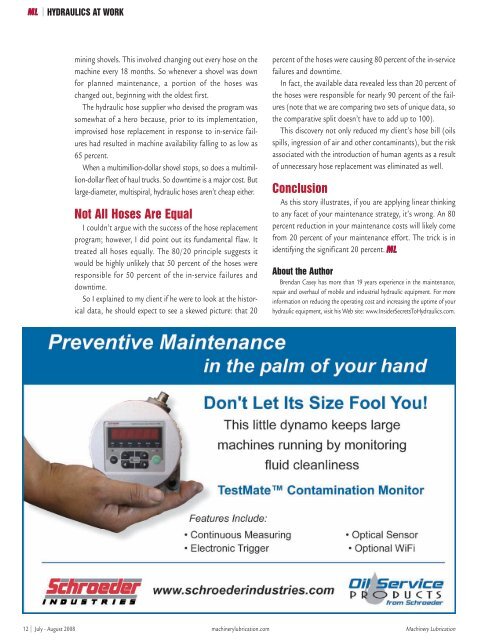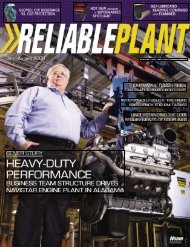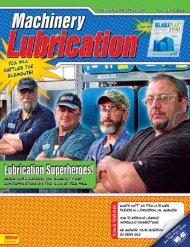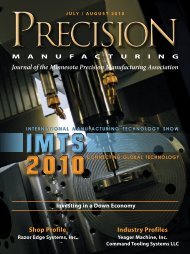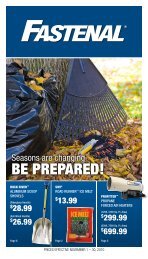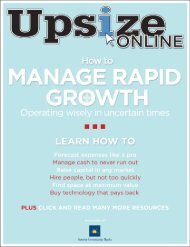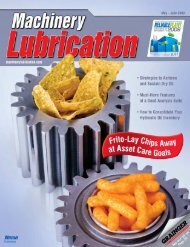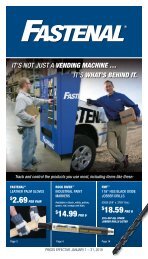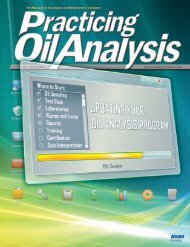Machinery Lubrication July August 2008
Machinery Lubrication July August 2008
Machinery Lubrication July August 2008
Create successful ePaper yourself
Turn your PDF publications into a flip-book with our unique Google optimized e-Paper software.
HYDRAULICS AT WORK<br />
mining shovels. This involved changing out every hose on the<br />
machine every 18 months. So whenever a shovel was down<br />
for planned maintenance, a portion of the hoses was<br />
changed out, beginning with the oldest first.<br />
The hydraulic hose supplier who devised the program was<br />
somewhat of a hero because, prior to its implementation,<br />
improvised hose replacement in response to in-service failures<br />
had resulted in machine availability falling to as low as<br />
65 percent.<br />
When a multimillion-dollar shovel stops, so does a multimillion-dollar<br />
fleet of haul trucks. So downtime is a major cost. But<br />
large-diameter, multispiral, hydraulic hoses aren’t cheap either.<br />
Not All Hoses Are Equal<br />
I couldn’t argue with the success of the hose replacement<br />
program; however, I did point out its fundamental flaw. It<br />
treated all hoses equally. The 80/20 principle suggests it<br />
would be highly unlikely that 50 percent of the hoses were<br />
responsible for 50 percent of the in-service failures and<br />
downtime.<br />
So I explained to my client if he were to look at the historical<br />
data, he should expect to see a skewed picture: that 20<br />
percent of the hoses were causing 80 percent of the in-service<br />
failures and downtime.<br />
In fact, the available data revealed less than 20 percent of<br />
the hoses were responsible for nearly 90 percent of the failures<br />
(note that we are comparing two sets of unique data, so<br />
the comparative split doesn’t have to add up to 100).<br />
This discovery not only reduced my client’s hose bill (oils<br />
spills, ingression of air and other contaminants), but the risk<br />
associated with the introduction of human agents as a result<br />
of unnecessary hose replacement was eliminated as well.<br />
Conclusion<br />
As this story illustrates, if you are applying linear thinking<br />
to any facet of your maintenance strategy, it’s wrong. An 80<br />
percent reduction in your maintenance costs will likely come<br />
from 20 percent of your maintenance effort. The trick is in<br />
identifying the significant 20 percent.<br />
About the Author<br />
Brendan Casey has more than 19 years experience in the maintenance,<br />
repair and overhaul of mobile and industrial hydraulic equipment. For more<br />
information on reducing the operating cost and increasing the uptime of your<br />
hydraulic equipment, visit his Web site: www.InsiderSecretsToHydraulics.com.<br />
12 <strong>July</strong> - <strong>August</strong> <strong>2008</strong> machinerylubrication.com <strong>Machinery</strong> <strong>Lubrication</strong>


